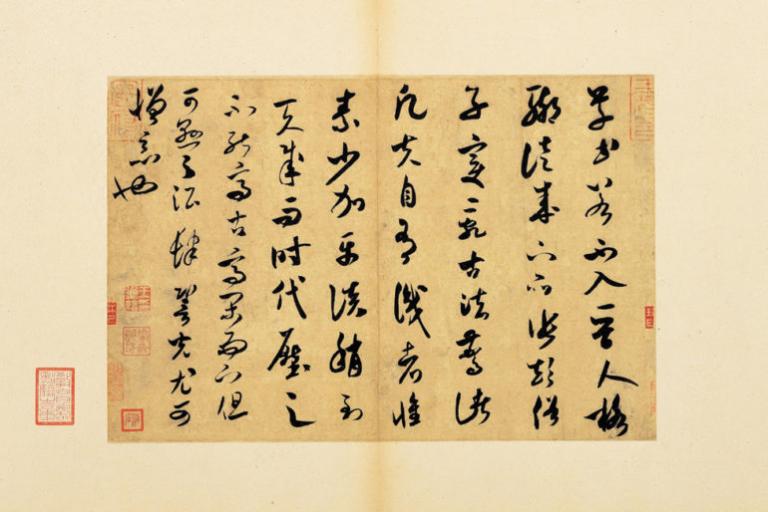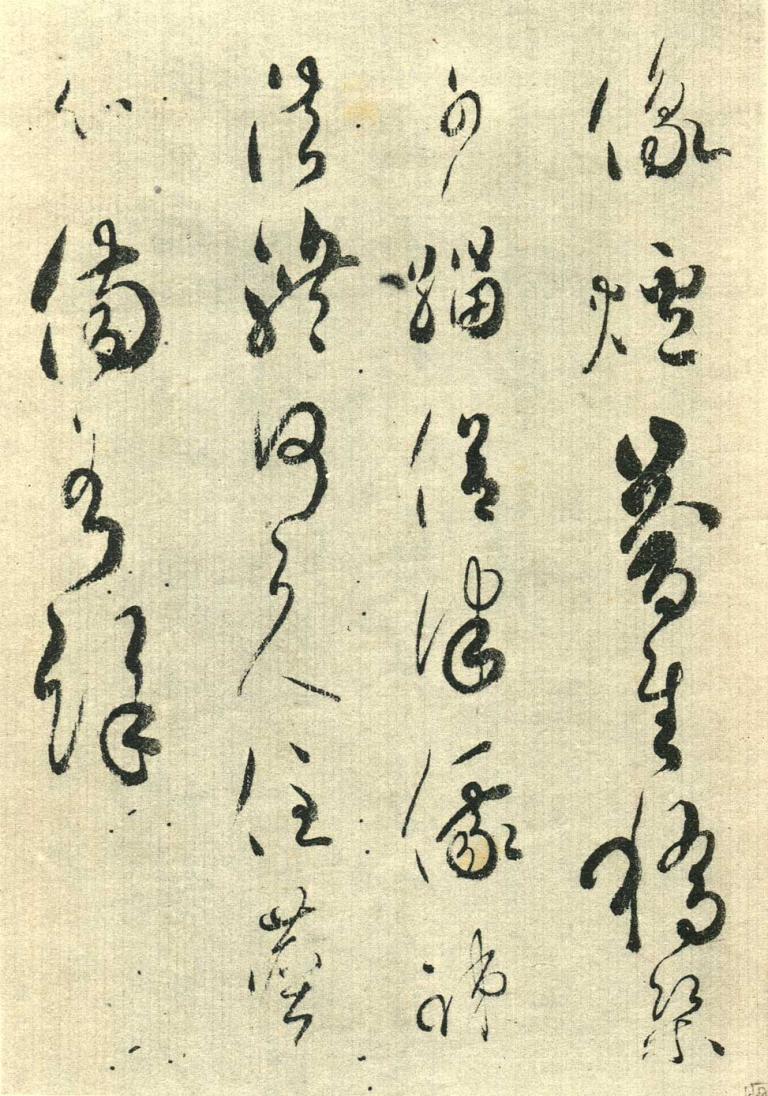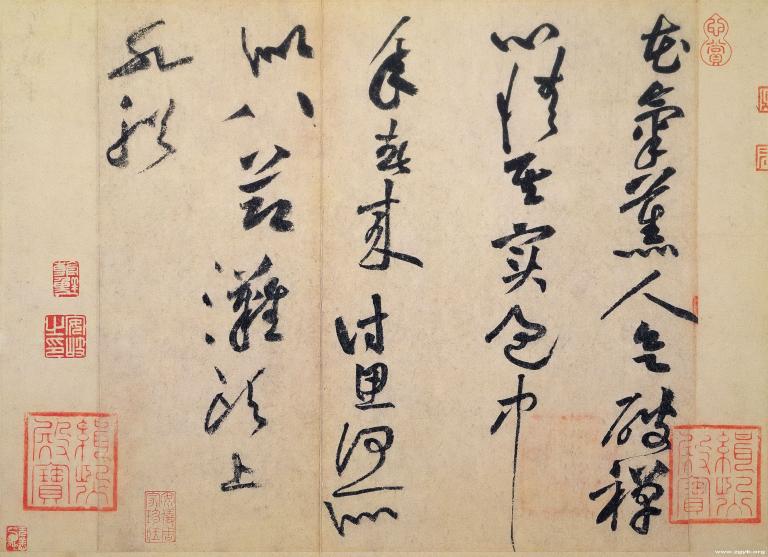Wumen School and Huating School
7 min readFrom Chenghua to Jiajing’s reign (1465-1566) in the Mid-Ming dynasty, the rise of Wumen school announced another new stage of Chinese calligraphy. The once fettered calligraphic circle in the early Ming dynasty became vibrant again and the activ core of calligraphic activities gradually shifted from Beijing to Suzhou and its surrounding areas in the South.

With prosperous economy and rich cultural heritage, Suzhou had always been a wonderful soil for great painters and calligraphers, among whom stood out Wumen School. Seemingly an effort to bring back the tradition of valuing the regular style rrection of defr style based on cursive, Wumen School, in essence, was a dealt blow to the superficially prosperous calligraphic field and became an important force in the Mid-Ming dynasty to push Chinese calligraphy forward.
Wumen School began to take shape in the early Ming dynasty. Though still living in the prime time of Taige style and thus unable to be completely free from its wu kian and Wang graped to challenong Ke, Xu Youzhen, Shen Zhou, Li Yingzhen. encouraged people to show their personal tastes and form their own styles. They were the forerunners of Wumen School and it was not until the emergence of “Four Masters of Suzhou” that Wumen School started its prime time. The so called “Four Masters of Suzhou” are Zhu Yunming, Wen Zhengming, Chen Chun and Wang Chong, who are regarded as the leading figures of Wumen School.(14601526), courtesy name(zi) Xizhe, courtesy namehao Zhishan (Zhi in Chi eans branch, for his extra finger), was born and brought up in Changzhou (now Suzhou in Jiangsu. Born into family with a long calligraphic tradition and greatly influenced by his grandfather Xu Youzhen and his father-in-law Li Yingzhen, Zhu’s calligraphy was outstanding among his peers and even wouldn’t be overshadowed by great calligraphers living in previous dynasties. In his late years, finally formed his own style after studying calligraphy o previous masters.
Excellent in regular, semi-cursive and cursive scripts, he was most renowned for his small regular and wild cursive. Zhu’s small regular script was good combination of the calligraphic spirit in the Jin dynasty as well as his own, while his wild cursive, penetrated with strong heroic and free sense, ofte surprised viewers with different ways of writing. Thus he was well worth the title “a forerunner of the calligraphic revolution in the late Ming dynasty”. Zhu Yunming was both a practitioner and theoretician. Opposed to Taige style which constrained the display of personal style as well as the tradition which only stressed personal freedom, Zhu deemed calligraphic spirit of the Jin dynasty and calligraphic principles of the Tang dynasty as the basis of calligraphy. He also valued the works in the Song dynasty and encouraged people to draw aspirations to make their works more spiritually appealing. As a leading figure of Wumen School, not only did Zhu Yunming inherit the quintessence of previous works, but also boosted younger generations’ confidence and enthusiasm. A strong sense of individuality revealed in his works made Zhu Yunming a prominent figure in the calligraphic history.

Wen Zhengming (1470-1559), initially named Mingbi and later Zhengming courtesy name (zi) Zhengzhong, courtesy name (hao)Hengshan Jushi (a retired scholar s born in Changzhou (now Suzhou in Jiangsu). His highest position assistant in the Hanlin Academy, commonly called “Compiling Assistant Wen”. He sat at Yu Wukuan’s feet for writing, at Li Yingzhen’s for calligraphy and ugh a poet, calligrapher and painter, Wen was most we known for his calligraphic works and paintings. He was the only one of the Four Masters of Suzhou who displayed a great talent in all the three fields. Zhu’s greatest achievement was in small regular script and the running-cursive cursive he style of his small regular was first after that of Ouyang Xun and later of Zhi Yong. In his late years, he began to follow the style of Zhong Yao and that of Wang Xizhi, but finally formed his own unique style successfully and became well know across the country. Hi His running-cursive which drew aspirations from many masterpieces was ves was of both classical and muscular beauty. It is a pity, however, that Wen was unsuccessful when he turned to Huang Tingjian for innovation and his calligraphy style never went beyond his teacher Shen Zhou’s. Another leading figure after Zhu Yunming in Wumen School, Wen Zhengming was of a noble character and high prestige. He had led the School for more than thirty years. Wen had many followers, and Chen Chun and Wang Chong were both his students.
Since Zhu Yunming died early, Wen and his students became the pillars of Wumen School in its prime time. Chen Chun (1483-1544), courtesy name (zi) Daofu and later Fufu, courtesy name (hao) Baiyangshan Ren (Resident of Mount Baiyang). Chen was from Changzhou (now Suzhou, in Jiangsu). A calligrapher as well as painter, Chen’s early calligraphic style was after Wen Zhengming. Chen Chun’s calligraphy originally followed Wen’s style but later started a new fashion, which was similar to Yang Ningshi or Mi Fu’s. Chen Chun’s biggest accomplishment in calligraphy was his posterity-respected cursive scripts. The constraint-free works had even pioneered the romantic calligraphy style appeared in the personality liberation thought during the late Ming dynasty. This also contributed to his irreplaceable role among the Wumen school calligraphers Wang Chong (1494-1533), courtesy name (zi) Furen, later changed as Fuji, courtesy name (hao) Yayishan Ren (Resident of Mount Yayi). Wang was also a native of Changzhounow Suzhou, in Jiangsu). Quite similar to Zhu Yunming and Wen Zhengming, Wang Chong was unsuccessful in his pursuit of a government job. Therefore, Wang spent all his life in poetry, calligraphy and painting. It was a pity that Wang died young. Much aff d by Zhu and Wen’s styles, Wang Chong’s works was also influenced alligraphers in the Jin and Tang dynasties, such as Zhong Yao, Wang Xianzhi, Zhi Yong, Yu Shinan and Sun Guoting. Despite all these, Wang Chong had his own innovative ideas which were revealed through his works. His small beautiful as Wen Zhengming’s. Wang Chong’s semi-cursive and ts were also stylish with implicit connotation. With less linking strokes, his calligraphy had an innovative pursuit beyond Wang Xizle Xianzhi’s style. Although turned out a flash, Wang’s innovative script was a splendid stanza in the verse of calligraphy history. Despite a short life of 40 years, Wang Chong, with his exceptiona talent, became another master among the Wumen Shcool calligraphers besides Zhu Yunming and Wen Zhengming.
Huating school and Wumen school had their respective unshakable status in paintings; as to the calligraphy, Huating school was also no pushover. From Shen Du and Shen Can to Dong Qichang, Chen Jiru and Mo Shilong, everybody could find his counterpart from Wumen School. As a leading calligrapher of the late Ming, Dong Qichang continued to be well-known in the Qing dynasty. Emperor Kangxi much appreciated Dong’s works, which brought them high value over more than a century and strengthened Dong’s fame as a leader of Huating calligraphers. Dong Qichang (1555-1636), courtesy name (zi) Xuanzai, courtesy name (hao) Sibai or Xiangguang Jushi, was from Huating area. He had once been a government official and got thus a posthumous name of Wenmin, so commonly called “Dong Wenmin or “Dong Huating”.
As a teenager, Dong Qichang attended the local imperial examination of Songjiang Region (which was the first step of getting a government job in Chinese feudal society), but failed just like Wen Zhengming. Since then, Dong had been diligent and studied hard until he made it. His calligraphy, though followed the style in the Jin and Tang dynasties, was harvested after learning from all previous calligraphy masters. During his early years Dong intended to go beyond Wumen school calligraphers by imitating Zhu Yunming and Wen Zhengming’s style. He also followed Zhao Mengfu in his middle age and worshipped Zhao for a life long time although in his old age he had some unpleasant comments about Zhao In Dong’s youth, as theory of Child’s mind advocated by Li Zhi and the Chan theory prevailed, Dong Qichang, having close relationship with Yuan Brothers (Yuan Zongdao, Yuan Hongdao, Yuan Zhongdao) who were leading supporters of personality liberation, also devoted himself to breaking through the old tradition. He advocated simplicity and innocence in calligraphy and pointed out for the first time thatcalligraphy’s’ artistic value lied in rhythm in the Jin dynasty, in rules in the Tang dynasty, and in expressiveness in the Song dynasty”, which had been a significant theory in the history of calligraphy.
The theory ha been elaborated later by Feng Ban and others, and had a profound impact. Dong Qichang’s accomplishment was mainly in his running cursive scripts. Following Wang Xizhi and Wang Xianzhi, and later Mi Fu, Dong’s works boasted gentle and implicit strokes, clean and spontaneous strokes, simple and complete structure especially the visionary effect of “more white than black”, which meant that once they were put on the paper there was more beauty to appreciate behind the strokes themselves. Dong Qichang was a great master of both painting and calligraphy in the late Ming dynasty. He established Huating school, refilling the blood for the calligraphy world of south Jiangsu, and contributed a new page in the Chinese calligraphy history.









